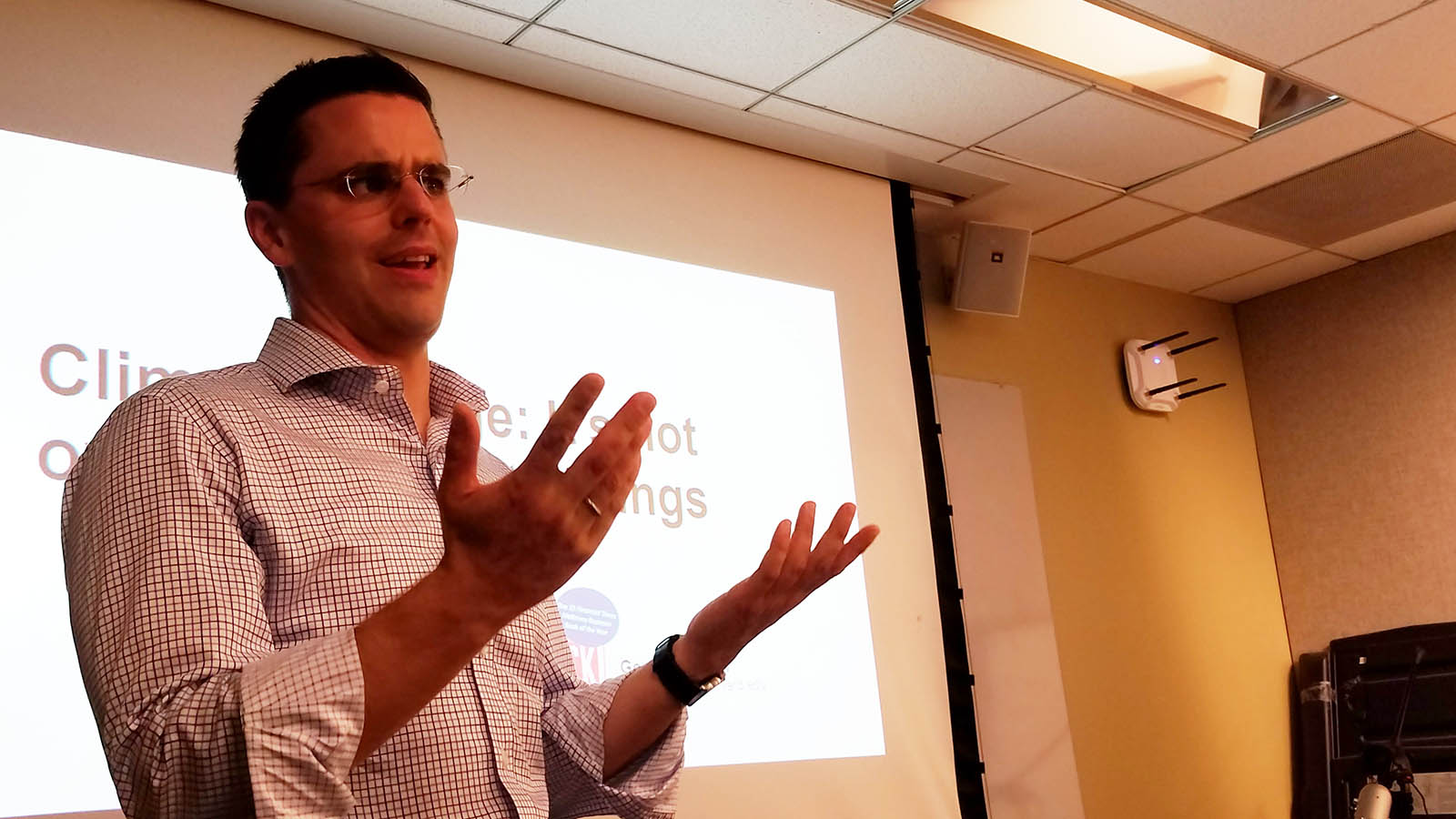Extreme heat killed more Americans last year than wildfires and tornados combined. Journalist Sam Bloch reflects on the threat it poses to Watts, Los Angeles.
Uncertainty Is No Excuse: Gernot Wagner on Climate Engineering
The co-director of Harvard’s Solar Geoengineering Research Program tells KSJ fellows that policymakers have misconstrued the climate debate.
The Climate Is Changing. How to Make People Care?
How can we make a monster problem more manageable? This was the conundrum facing participants at “Tipping the Scales on Climate Change,” an April 20 panel discussion sponsored by KSJ and Undark as part of the Cambridge Science Festival.
At the Cambridge Science Festival, KSJ and Undark Focus on Climate Change
An all-star lineup led by Andrew Revkin, of New York Times and ProPublica fame, and an excerpt from Ian Cheney’s documentary “The Measure of a Fog.” fst
Climate Change: The View From 35,000 Feet
Steven Barrett of MIT tells the KSJ fellows that jets and their contrails could dash hopes of reversing global warming.
High Stakes at Climate Talks, And KSJ Fellows Are On It
The importance of the COP21 climate talks in Paris have drawn some of the best science and environmental journalists in the world to the potentially historic summit, including several former KSJ fellows.


 "
"
 "
" "
" "
" "
"